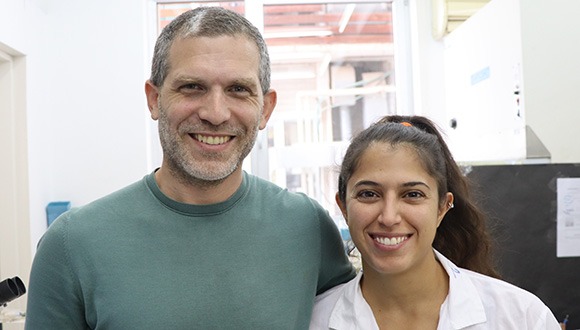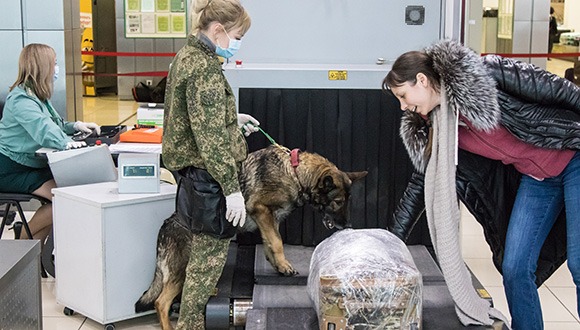After having developed a robot that hears through the ear of a locust, researchers from Tel Aviv University have succeeded in equipping a robot with the sense of smell, using a biological sensor. The sensor sends electrical signals as a response to the presence of a nearby odor, which the robot can detect and interpret. The researchers successfully connected the biological sensor to an electronic system and using a machine learning algorithm, were able to identify odors with a level of sensitivity 10,000 times higher than that of a commonly used electronic device. The researchers say “The sky’s the limit,” and believe that this technology may also be used in the future to identify explosives, drugs, diseases, and more.
WATCH: The first robot with a biological nose. Only at Tel Aviv University.
“Man-made technologies still can’t compete with millions of years of evolution. One area in which we particularly lag behind the animal world is that of smell perception (…) When they want to check if a passenger is smuggling drugs [at the airport], they bring in a dog to sniff him.” Dr. Ben Maoz and Prof. Amir Ayali
Technology Lags Behind Evolution
The biological and technological breakthrough was led by doctoral student Neta Shvil of Tel Aviv University’s Sagol School of Neuroscience, Dr. Ben Maoz of the Fleischman Faculty of Engineering and the Sagol School of Neuroscience, and Prof. Yossi Yovel and Prof. Amir Ayali of the School of Zoology and the Sagol School of Neuroscience. The results of the study were published in the prestigious journal Biosensor and Bioelectronics.
Dr. Maoz and Prof. Ayali explain: “Man-made technologies still can’t compete with millions of years of evolution. One area in which we particularly lag behind the animal world is that of smell perception (…) When they want to check if a passenger is smuggling drugs [at the airport], they bring in a dog to sniff him.”
“In the animal world, insects excel at receiving and processing sensory signals. A mosquito, for example, can detect a 0.01 percent difference in the level of carbon dioxide in the air. Today, we are far from producing sensors whose capabilities come close to those of insects.”
The researchers point out that, in general, our sensory organs, such as the eye, ear and nose – as well as those of all other animals – use receptors that identify and distinguish between different signals. Then, the sensory organ translates these findings into electrical signals, which the brain decodes as information. The challenge of biosensors is in the connection of a sensory organ, like the nose, to an electronic system that knows how to decode the electrical signals received from the receptors.

Dr. Ben Maoz and doctoral student Neta Shvil
“Nature is much more advanced than we are, so we should take advantage of that.” Dr. Ben Maoz.
10,000 Times More Sensitive to Smell
“We connected the biological sensor [to the electronic system] and let it smell different odors while we measured the electrical activity that each odor induced,” explains Prof. Yovel. “The system allowed us to detect each odor at the level of the insect’s primary sensory organ.”
“Then, in the second step, we used machine learning to create a ‘library’ of smells. In the study, we were able to characterize 8 odors, such as geranium, lemon and marzipan, in a way that allowed us to know when the smell of lemon or marzipan was presented. In fact, after the experiment was over, we continued to identify additional different and unusual smells, such as various types of Scotch whiskey. A comparison with standard measuring devices showed that the sensitivity of the insect’s nose in our system is about 10,000 times higher than the devices that are in use today.”
“Nature is much more advanced than we are, so we should take advantage of that,” says Dr. Maoz. “The principle we have demonstrated can be used and applied to other senses, such as sight and touch. For example, some animals have amazing abilities to detect explosives or drugs; the creation of a robot with a biological nose could help us preserve human life and identify criminals in a way that is not possible today. Some animals can detect diseases. Others sense earthquakes. The sky is the limit.”
What’s next? The researchers plan to give the robot a navigation ability to allow it to localize the odor source and later, its identity.

Will he be able to retire soon? A working dog searches for hazardous materials at the airport

